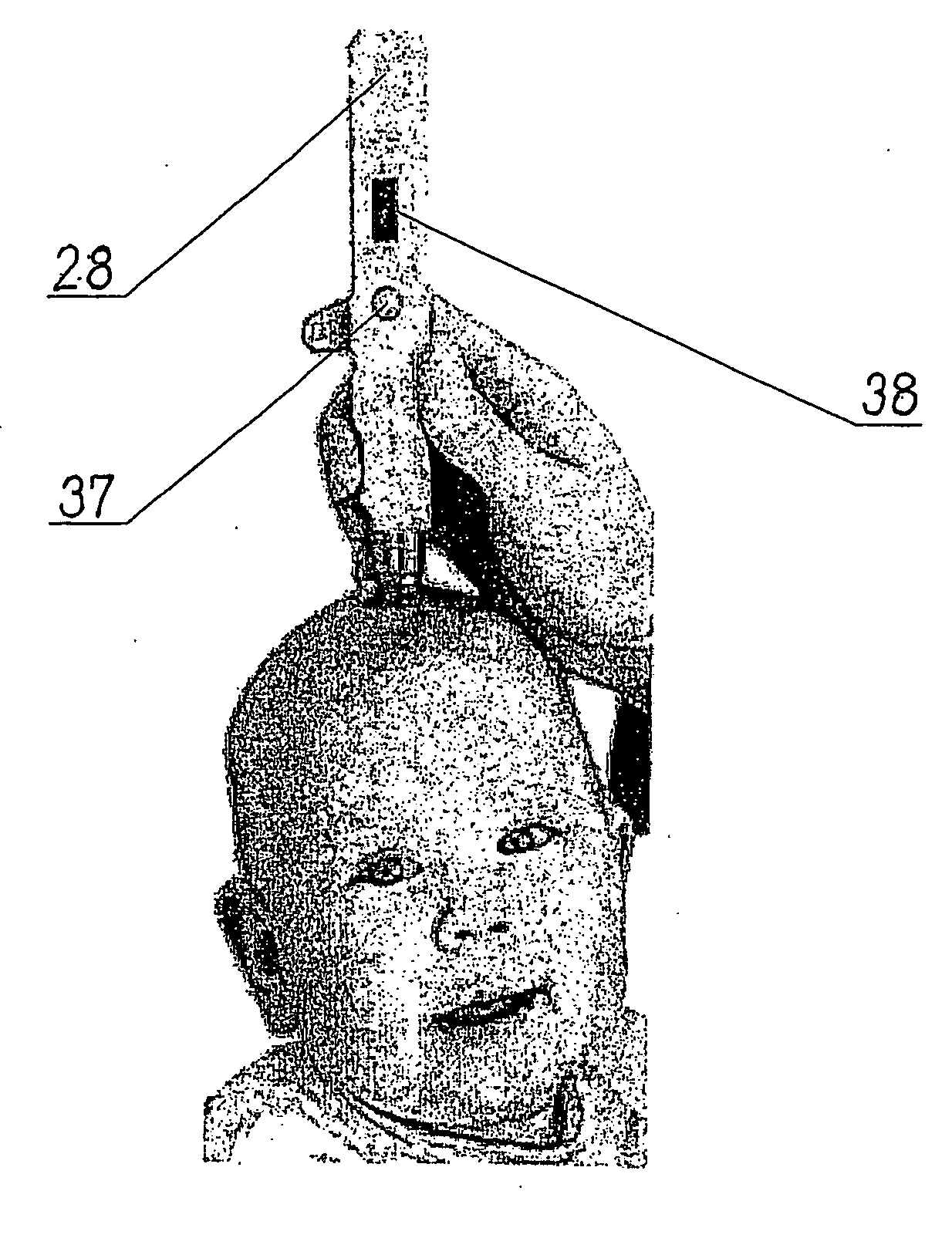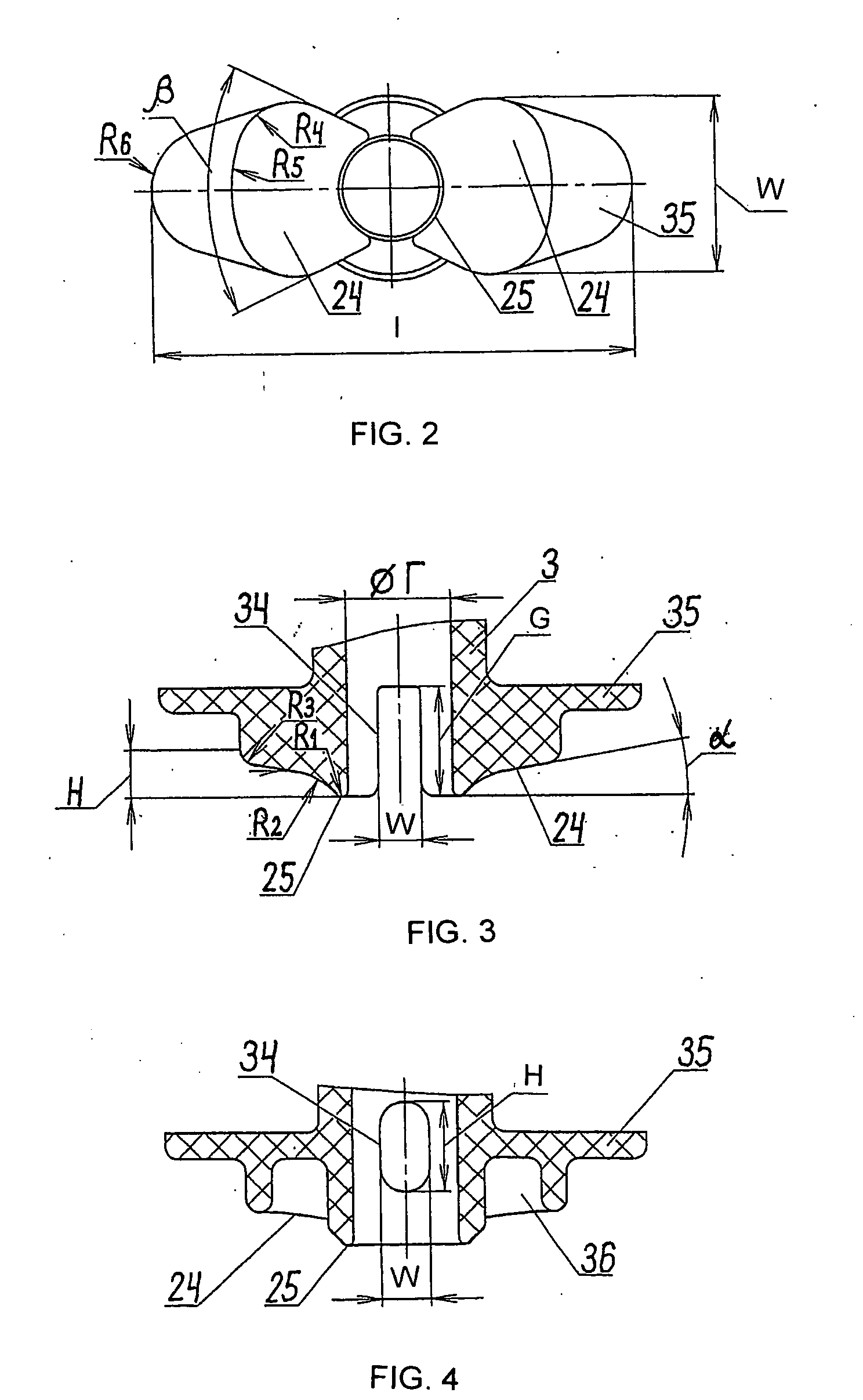Device for measuring intracranial pressure in newborns and babies and a supporting member for said device
a technology for measuring intracranial pressure and newborns, which is applied in the field of pediatric portable medial devices, can solve the problems of high cost, complex design of prior art devices, and inability to produce objective evaluation of icp, and achieve the effect of improving the operating properties of devices
- Summary
- Abstract
- Description
- Claims
- Application Information
AI Technical Summary
Benefits of technology
Problems solved by technology
Method used
Image
Examples
Embodiment Construction
[0050]The ICP measuring device (FIG. 1) comprises a body 1 made of plastics and a movable bush 2 having a supporting member 3 in the form of an end piece disposed within body 1 for limited reciprocation therein to apply static load to a child's bregmatic fontanel. A rod 4 of a nonmagnetic material is disposed in the cavity of movable bush 2 for movement relative to supporting member 3 for deforming the fontanel by a short-duration impact force.
[0051]Rod 4 of the device is reciprocated by an electromagnetic system that comprises a permanent magnet 5 positioned on rod 4 and a coil 6 placed in the wall of movable bush 2 and having at least one measuring winding 7 disposed relative to permanent magnet 5 to control the direction and speed of movement of rod 4. Measuring winding 7 is connected by a lead 8 to a control, processing, and display unit 9 (FIG. 7).
[0052]Rod 4 is made of plastics and has a flat base 10 measuring 0.2 to 1.5 mm2 in area. An area smaller than 0.2 mm2 is likely to p...
PUM
 Login to View More
Login to View More Abstract
Description
Claims
Application Information
 Login to View More
Login to View More - R&D
- Intellectual Property
- Life Sciences
- Materials
- Tech Scout
- Unparalleled Data Quality
- Higher Quality Content
- 60% Fewer Hallucinations
Browse by: Latest US Patents, China's latest patents, Technical Efficacy Thesaurus, Application Domain, Technology Topic, Popular Technical Reports.
© 2025 PatSnap. All rights reserved.Legal|Privacy policy|Modern Slavery Act Transparency Statement|Sitemap|About US| Contact US: help@patsnap.com



